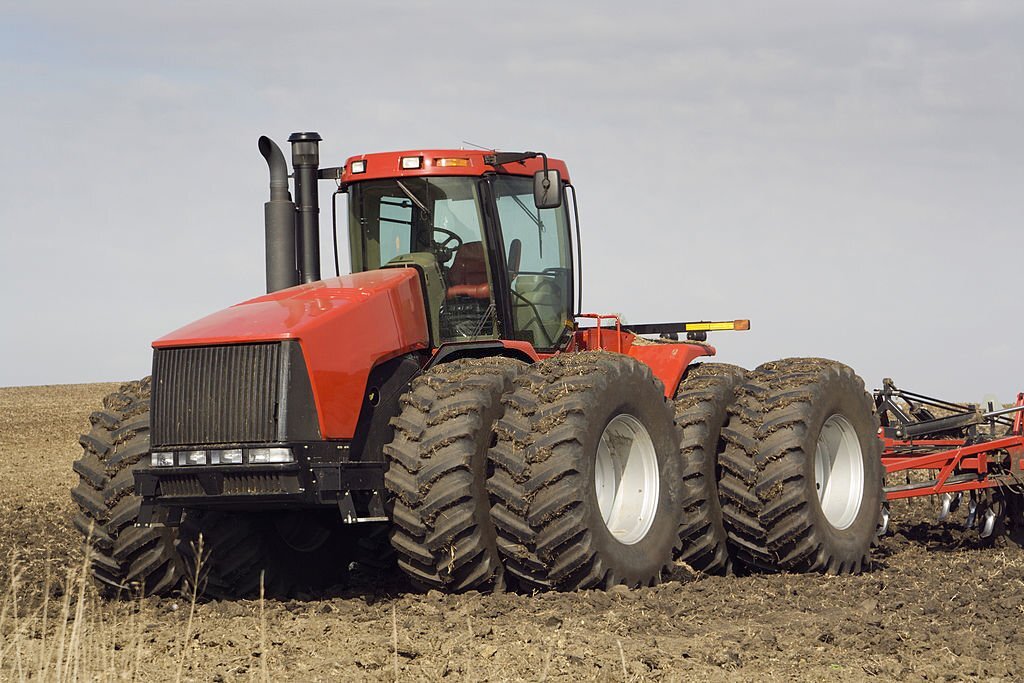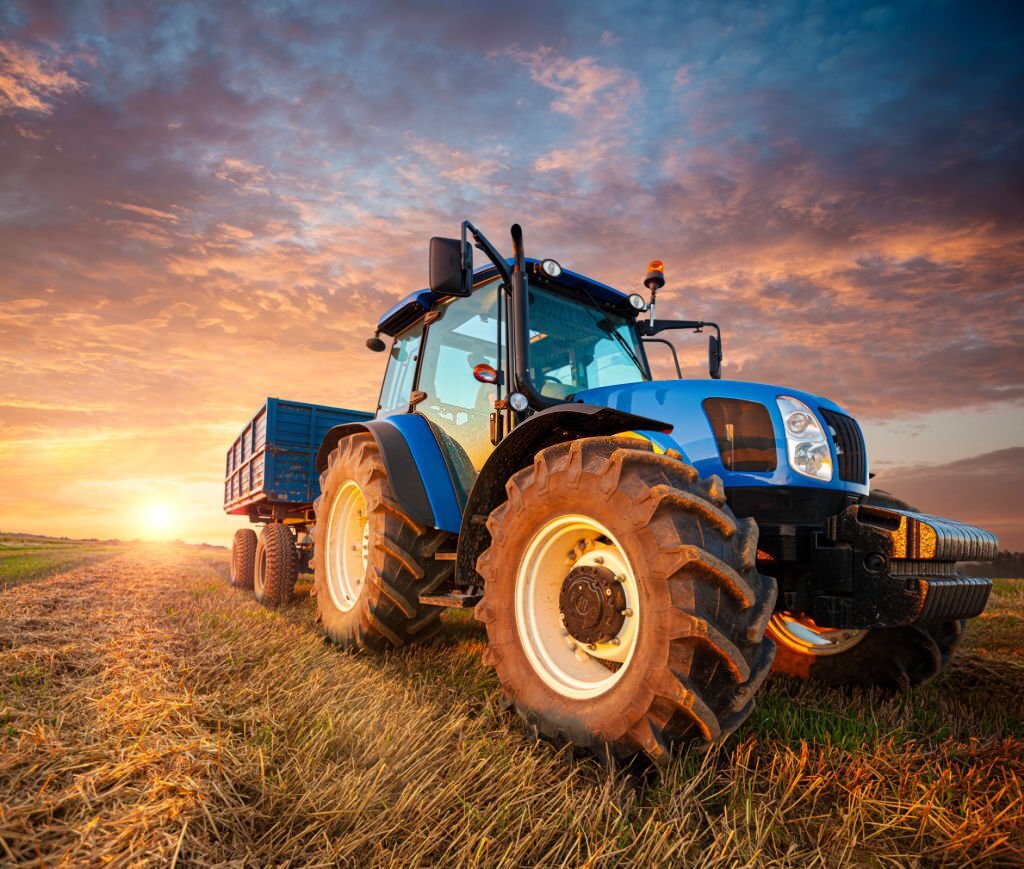
Tractors are the unsung heroes of heavy equipment operations, revolutionizing industries such as agriculture, construction, and forestry. These versatile machines are renowned for their adaptability and power, offering a wide array of benefits that enhance efficiency across a broad spectrum of tasks. In this article, we’ll delve into how tractors contribute to the efficiency of heavy equipment operations and why they are indispensable in various industries.
1. Versatility in Task Execution:

Tractors are adept at multitasking. With the ability to accommodate a diverse range of attachments and implements, they can seamlessly transition between tasks. This versatility allows operators to perform multiple operations without the need for specialized equipment, streamlining workflows and reducing downtime.
Tractor versatility in task execution refers to the tractor’s remarkable ability to adapt and perform a wide range of tasks efficiently across different industries and applications. Tractors are renowned for their multifunctionality and adaptability, making them indispensable assets in agriculture, construction, forestry, landscaping, and various other heavy equipment operations. Here are key aspects that define tractor versatility in task execution:
Attachment Compatibility: Tractors can accommodate an extensive array of attachments and implements, such as plows, harrows, loaders, backhoes, mowers, and more. These attachments can be easily interchanged, allowing operators to switch between tasks quickly.
Multifunctional Capabilities: Tractors are designed to excel in multiple functions. For example, they can be used for land preparation, planting, fertilizing, harvesting, material handling, grading, and snow removal, among other tasks. This versatility minimizes the need for owning multiple specialized machines.
Cross-Industry Applicability: Tractors find utility across various industries, including agriculture, construction, landscaping, and forestry. Their adaptability makes them suitable for a diverse range of tasks, contributing to their widespread use.
Adaptability to Terrain: Tractors are capable of operating in different terrains and environments, from agricultural fields to construction sites and rugged forestry areas. Their adaptability to various work conditions is a testament to their versatility.
Precision and Control: Modern tractors often feature advanced control systems and technologies that enable precise and controlled task execution. This is crucial for tasks like planting seeds at optimal spacing or grading land accurately.
2. Increased Productivity in Agriculture:

In the realm of agriculture, tractors are instrumental in boosting productivity. They are employed for plowing, tilling, planting, and harvesting crops, significantly reducing manual labor. Advanced technologies like GPS-guided steering systems further enhance precision and efficiency in large-scale farming operations.
Increased Productivity in Agriculture Through Tractor Use
In the world of agriculture, where efficiency and productivity are paramount, tractors have revolutionized the way farmers cultivate crops and manage their land. These versatile machines have become the backbone of modern farming practices, significantly boosting productivity and reducing labor-intensive tasks. In this article, we’ll delve into how tractors contribute to increased productivity in agriculture, making them indispensable tools on farms worldwide.
Efficient Land Preparation:
One of the primary roles of tractors in agriculture is land preparation. Tractors equipped with plows, tillers, and harrows can quickly and effectively prepare fields for planting. They break up compacted soil, remove weeds, and create a fertile seedbed, reducing the time and effort required for manual labor.
Precision Planting:
Tractors are equipped with specialized attachments like seeders and planters that enable precise and uniform seed placement. GPS-guided systems further enhance accuracy by ensuring that seeds are planted at optimal intervals. This precision minimizes seed wastage and results in even crop emergence.
Timely Crop Maintenance:
Tractors play a crucial role in crop maintenance tasks. They are used for activities such as fertilization, pesticide application, and irrigation. Tractors equipped with sprayers can evenly distribute fertilizers and pesticides, ensuring that crops receive the necessary nutrients and protection from pests and diseases.
Efficient Harvesting:
In modern agriculture, tractors are commonly used in harvesting operations. Combine harvesters, often towed by tractors, can efficiently harvest and process crops like wheat, corn, and soybeans. This automation drastically reduces the labor required for manual harvesting, leading to faster and more efficient crop collection.
Reduced Labor Dependency:
Tractors have significantly reduced the labor required for many farming tasks. Farmers can accomplish more work with fewer workers, freeing up valuable time and resources for other essential activities on the farm.
3. Precision and Consistency:

Tractors are equipped with advanced control systems that enable precise and consistent execution of tasks. This precision is particularly valuable in applications like seeding, fertilization, and spraying, where accurate placement of inputs is critical for optimal crop growth.
Precision and Consistency: How Tractors Revolutionize Farming
In the realm of modern agriculture, precision and consistency are essential elements that contribute to higher yields, reduced resource wastage, and sustainable farming practices. Tractors, with their advanced technologies and versatile capabilities, play a pivotal role in achieving these goals. This article explores how tractors bring precision and consistency to farming operations, revolutionizing the way crops are cultivated and managed.
GPS-Guided Precision Farming:
Tractors are increasingly equipped with GPS-based guidance systems that enable precise control over farming operations. These systems allow farmers to create accurate field maps, define precise planting and harvesting paths, and maintain consistent row spacing. The result is uniform crop distribution and optimized land utilization.
Seed Placement Accuracy:
Tractors equipped with modern planters ensure that seeds are planted at the correct depth and spacing. Precise seed placement minimizes competition among plants for nutrients and sunlight, leading to healthier crop growth and increased yields.
Controlled Fertilization and Pesticide Application:
With the help of tractors, farmers can precisely apply fertilizers and pesticides to their fields. Variable rate technology (VRT) allows for customized applications based on soil and crop needs, reducing overuse and minimizing environmental impact.
Consistent Irrigation Practices:
Tractors equipped with irrigation systems can maintain consistent water distribution across fields. This ensures that crops receive the right amount of moisture, preventing under- or over-irrigation, which can negatively affect crop health.
Efficient Soil Management:
Tractors equipped with implements like subsoilers and soil compactors can address soil compaction issues. Precision in soil management improves root development and nutrient absorption, leading to healthier crops and increased yields.
4. Land Preparation and Maintenance:

Tractors excel in land preparation and maintenance tasks. They are used for grading, leveling, and clearing land, ensuring that construction sites, roads, and agricultural fields have a smooth and even surface, which is essential for subsequent operations.
The benefits of tractor land preparation and maintenance in agriculture are numerous and have a direct impact on crop yields, soil health, and overall farm efficiency. Here are some of the key advantages:
Enhanced Soil Structure: Tractor-powered plowing and tilling break up compacted soil, improving its structure and reducing soil compaction. Loose, well-aerated soil allows roots to penetrate easily and access nutrients and water more effectively.
Improved Seedbed Quality: Tractor-facilitated seedbed preparation creates a smooth and level planting surface. This promotes consistent planting depth and seed-to-soil contact, leading to even crop emergence and better stand establishment.
Weed Control: Tractors equipped with various implements can efficiently control weeds. This reduces competition for resources like sunlight, water, and nutrients, allowing crops to grow more vigorously.
Soil Erosion Prevention: Tractors help implement erosion control measures like terracing and contour plowing, which minimize soil erosion due to rainfall or wind. This protects the topsoil and prevents its loss, preserving soil fertility.
Efficient Drainage: Tractors are used to create drainage systems that prevent waterlogging and ensure proper soil moisture levels. Effective drainage improves crop health and reduces the risk of root diseases.
5. Heavy Lifting and Material Handling:

Tractors equipped with loaders and forks are invaluable for heavy lifting and material handling. They can efficiently transport and stack materials, load trucks, and manage supplies on job sites, reducing manual labor and expediting processes.
Tractors are renowned for their versatility in various heavy equipment operations, and one of their significant roles is heavy lifting and material handling. With the right attachments and implements, tractors become powerful machines for moving, lifting, and transporting heavy loads on farms, construction sites, and other industrial applications. In this article, we’ll explore how tractors excel in heavy lifting and material handling, streamlining work processes and increasing productivity.
Loader Attachments:
Tractors can be equipped with front-end loaders, which are versatile tools for lifting and moving materials. These loaders can handle various tasks, such as scooping up soil, gravel, or mulch, and transporting it to different locations on the farm or job site. They can also handle tasks like loading and unloading trucks or stacking pallets of materials.
Forklift Attachments:
Tractors can be fitted with forklift attachments, effectively turning them into rough-terrain forklifts. These attachments are ideal for lifting and moving heavy pallets, crates, bales, and other bulky materials. Tractor-mounted forklifts are especially valuable in agricultural settings for handling produce, feed, and equipment.
Rear Three-Point Hitch:
Tractors often feature a rear three-point hitch, allowing the attachment of various implements. Implements like rear blades, box blades, and rear scoops enable the tractor to move and distribute materials, level surfaces, and perform grading tasks. This versatility is invaluable for land maintenance and construction projects.
Bale Handling:
In agriculture, tractors play a crucial role in bale handling. Specialized bale forks and grabbers can be attached to the tractor’s loader or three-point hitch to lift and transport hay, straw, or silage bales. This simplifies the process of feeding livestock and storing forage.
Material Spreading:
Tractors are equipped with spreader attachments that can evenly distribute materials like fertilizer, lime, or manure across fields. These spreaders are essential for precise and efficient material application, ensuring uniform coverage for optimal crop growth.
In conclusion, tractors are invaluable assets in heavy equipment operations, offering a broad range of benefits that enhance efficiency, productivity, and cost-effectiveness. Their adaptability, precision, and ability to perform a multitude of tasks make them essential across various industries. As technology continues to advance, tractors are likely to play an even more pivotal role in further optimizing heavy equipment operations, ultimately shaping the future of these industries.

